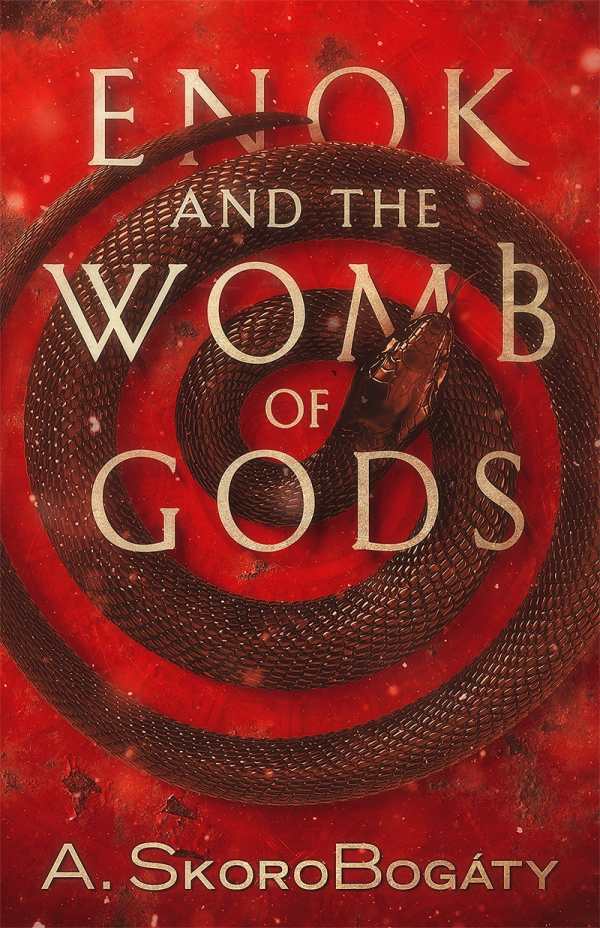
Enok and the Womb of Gods
- 2020 INDIES Finalist
- Finalist, Fantasy (Adult Fiction)
The complex fantasy novel Enok and the Womb of Gods is set in an early world wherein serpents roam the earth and humanity is in its infancy.
A. SkoroBogaty’s religious fantasy novel Enok and the Womb of Gods imagines a primordial world, before the Garden of Eden, in which the serpents are in charge.
A pair of mysterious watchers are sent from heaven to observe a small tribe of humans who live in a humble way in their semitropical paradise. Their more specific duty is to keep eyes on Eyda, the tribe’s matriarch. Eyda is ancient and a great storyteller; she dreams of a past age, when wooden idols could be made to come to life and threaten the burgeoning human race. Eyda’s story is an entryway to the even older story of Enok, who escaped the womb of the gods.
Introductory passages from the book of Genesis contextualize the world and its fallen state, describing how God cursed the serpent to crawl on its belly, and covering the origins of the giant Nephilim. The cultures of the serpents and heroes are fascinating; their conflict spills from the highest heaven to the mortal world below. Human beings, or “elims,” are caught in the middle, with little power to change their destinies until the days of Enok.
Enok, an everyman on the cusp of manhood, lives on an island run by gigantic talking serpents. He first seeks acceptance from the diverse and divided serpents, proving that he is not an animal, but a person worthy of respect. In time with Nephilim coming to the island, though, Enok is blamed for the death of his friend, is caught by the authorities, and seeks a way to escape.
But within the story, Enok functions more as a placeholder for ideas, such as of humans’ abilities to meet challenges, than as an individualized person. His story is a vehicle to explore the ancient world. In contrast, Eyda is fleshed out as a wonderful curmudgeon who has seen too much pain and misery, and who finds grace through understanding. The book’s supporting characters are an otherworldly mix of dragons, intelligent birds, and heaven-sent beings who add supernatural flavor to the text. But because every serpent has three names—a public one, a common one, and a hidden one—tracking them is complicated.
As Eyda tells Enok’s story, she is often interrupted, usually just as Enok is about to be captured or escape; this builds suspense, and such cliffhangers drive the text forward. Eyda’s own story is an exciting bookend to Enok’s, with the opening punch of her escaping being sacrificed to a wooden god. In general, though, the pace flags, in part because the book lingers too long on Enok’s development and because of ample backstory concerning the nuances of serpent political struggles. It takes time to unravel the mystery of Enok’s origins and experiences, but when he finally enters the hidden temple at the heart of the serpent island, he encounters tantalizing clues about the mysteries of God and creation, though these leave his own importance undefined.
The complex fantasy novel Enok and the Womb of Gods is set in an early world wherein serpents roam the earth and humanity is in its infancy.
Reviewed by
Jeremiah Rood
Disclosure: This article is not an endorsement, but a review. The publisher of this book provided free copies of the book and paid a small fee to have their book reviewed by a professional reviewer. Foreword Reviews and Clarion Reviews make no guarantee that the publisher will receive a positive review. Foreword Magazine, Inc. is disclosing this in accordance with the Federal Trade Commission’s 16 CFR, Part 255.
